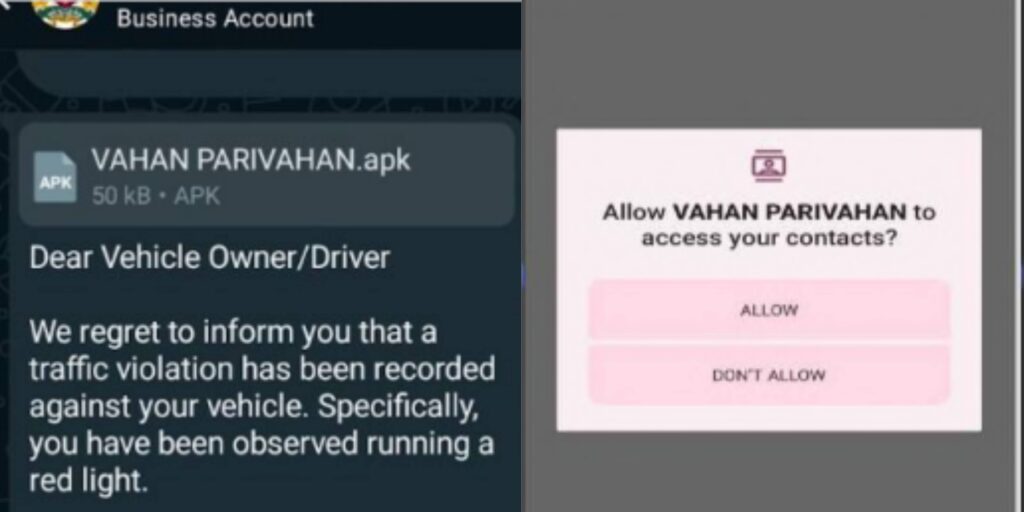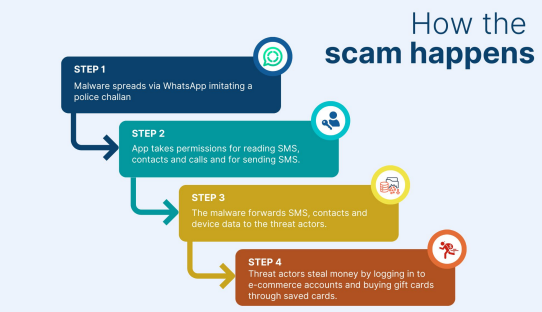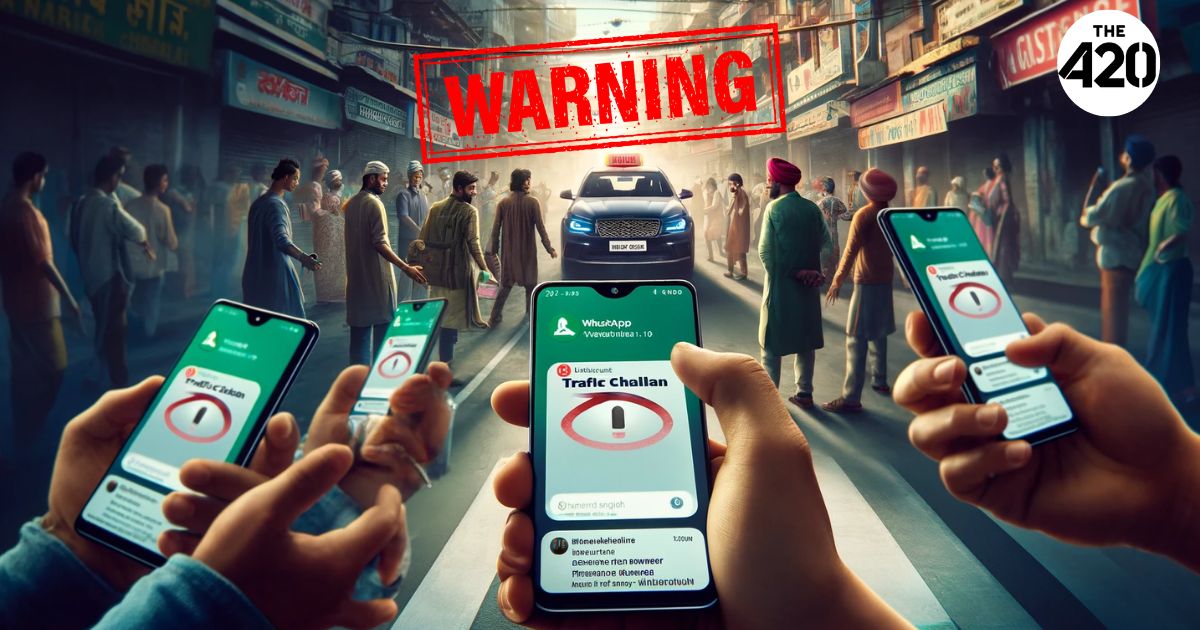Indian Android smartphone users, beware! A sophisticated cyberattack campaign is targeting you through WhatsApp, and it’s designed to steal your money. Cybersecurity firm CloudSEK has exposed this cunning scheme that uses fake traffic challan (traffic violation fine) messages to lure you into a trap.
The Deceptive Tactic:
Imagine receiving a message on WhatsApp claiming you have unpaid traffic challans. The message appears to come from a legitimate source, like Parivahan Sewa (India’s national transport portal) or the Karnataka Police. This creates a sense of urgency, tricking you into clicking on a link embedded within the message. But clicking that link is where the real danger begins.
Read Full Report: Unveiling Maorrisbot: The Inner Workings of an Android Trojan Malware
The Malicious App:
The link you click doesn’t take you to a challan payment page. Instead, it initiates the download of a disguised app. This app may appear harmless, but it’s actually malware designed to steal your data.

Stealing Your Sensitive Information:
Once installed, the malware requests far more permissions than a regular app should. These permissions can include access to your contacts, phone calls, SMS messages, and even the ability to become your default messaging app. With these permissions granted, the malware silently operates in the background, acting like a digital spy.
- Contact Theft: The malware can steal all your contact information, potentially exposing your entire network to further attacks.
- SMS Interception: The malware can intercept your SMS messages, including one-time passwords (OTPs) sent by banks and other financial institutions.
- Device Information: The malware can gather information about your device, which attackers can use to tailor future attacks.

ALSO READ: Fake Websites, Fake Profits: How This Cryptocurrency Scam Duped Over 100 Investors of Rs 5 Crore
Financial Theft Through Gift Cards:
Armed with stolen OTPs, attackers can gain access to your e-commerce accounts. They then use your stolen funds to purchase gift cards, a method difficult to trace. Attackers leverage techniques like proxy IPs to further complicate tracing their location.
The Scope of the Threat:
- Over 4,451 devices have been infected by this malware so far.
- A single scammer has managed to steal a staggering Rs. 16 lakhs by exploiting this scheme, using the stolen funds to purchase gift cards.
- Gujarat and Karnataka are the two Indian states most affected by this campaign.
ALSO READ: Inside Rs 96.2 Lakh Investment Fraud – How They Lured Victims and Got Busted by CID Jharkhand
How to Protect Yourself:
Don’t let this clever scam steal your money and peace of mind. Here’s what you can do to stay safe:
- Verify Challan Information: Never rely solely on WhatsApp messages for challan information. Always verify any outstanding challans directly through official government websites or apps.
- Scrutinize App Permissions: Be very cautious about the permissions you grant to any app. Only allow access to features absolutely essential for the app’s functionality. Don’t give an app more access than it needs!
- Download Apps Responsibly: Only download and install apps from trusted sources like the official Google Play Store. Avoid downloading apps from untrusted websites or third-party stores.
- Maintain Updated Devices: Regularly update your device’s operating system and apps. These updates often include security patches that can help safeguard your device against vulnerabilities.
- Monitor SMS Activity: Consider using tools that can alert you of suspicious activity in your SMS messages, such as a sudden surge in outgoing messages.
- Enable Account Alerts: Set up notifications for transactions on your banking and financial apps. This will help you identify any unauthorized activity quickly.
- Spread Awareness: Educate your friends and family about the risks associated with unverified apps and phishing scams. By raising awareness, you can help protect others from falling victim to similar attacks.
Researchers at CloudSEK were able to identify the attackers as likely Vietnamese based on conversations and IP addresses found during their investigation.
By following these steps and staying vigilant, you can significantly reduce your risk of being targeted by this malicious campaign. Remember, cybercriminals often rely on a sense of urgency or panic to trick victims. If a message or offer seems too good to be true, it probably is. Don’t click on suspicious links, and always verify information before taking any action.
Follow The420.in on
Telegram, Facebook, Twitter, LinkedIn, Instagram and YouTube


